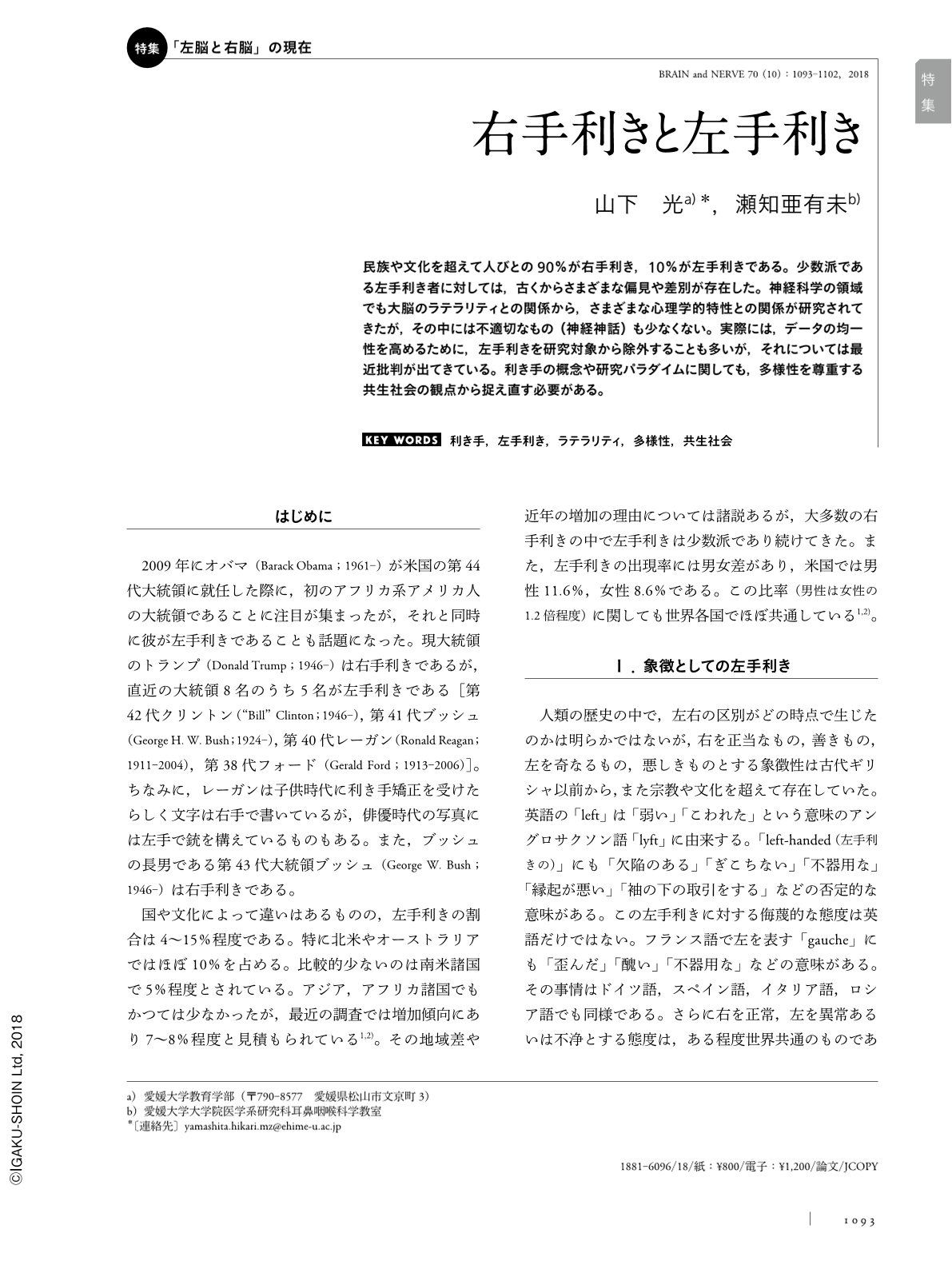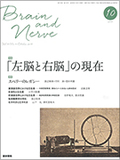Japanese
English
- 有料閲覧
- Abstract 文献概要
- 1ページ目 Look Inside
- 参考文献 Reference
民族や文化を超えて人びとの90%が右手利き,10%が左手利きである。少数派である左手利き者に対しては,古くからさまざまな偏見や差別が存在した。神経科学の領域でも大脳のラテラリティとの関係から,さまざまな心理学的特性との関係が研究されてきたが,その中には不適切なもの(神経神話)も少なくない。実際には,データの均一性を高めるために,左手利きを研究対象から除外することも多いが,それについては最近批判が出てきている。利き手の概念や研究パラダイムに関しても,多様性を尊重する共生社会の観点から捉え直す必要がある。
Abstract
Globally, approximately 90% of individuals are right-handed, while the remaining 10% are left-handed. Handedness is associated with functional lateralization of cerebral dominance, and may also be associated with various types of psychological characteristics. Unfortunately, neuromyths of left handedness have become deeply embedded in public consciousness due to misleading studies. In neuroscience research, it is common for left-handed individuals to be excluded from study cohorts in an attempt to increase data uniformity. Left-handed participants represent a substantial portion of the population and their inclusion of left-handed participants can be informative in studies of cerebral asymmetry. We should aim to construct a society that allows people with diverse characteristics, such as left-handed individuals live without discomfort or stress.

Copyright © 2018, Igaku-Shoin Ltd. All rights reserved.


